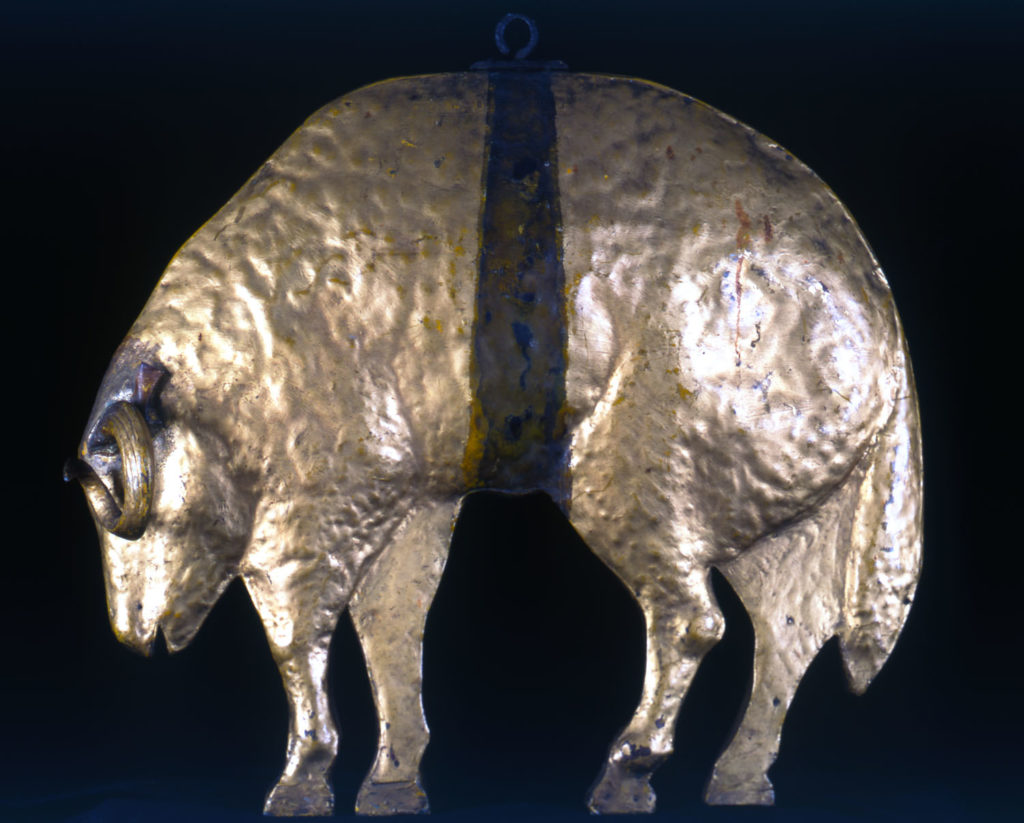Explore
Street

Woollen Draper’s or Inn Sign (The Golden Fleece)
Artist unkown
1850-1900
Copper and Gilt
Height: 36.5 cm
During the medieval period, wool became an increasingly important commodity across Europe for the production of cloth.
English fleece was regarded as being the best wool, and therefore was sort after for feeding the looms of the best weavers and cloth-making towns in Europe, who willingly paid a premium for it. The export of wool became a lucrative business, and drapers and cloth merchants took up the symbol of ‘The Golden Fleece’, from the ancient Greek myth of Jason and the Argonauts, as their trade emblem. In the myth, Jason endures many tasks, the final of which was to fetch the golden fleece, in order to become the King of Iolcus. The golden fleece has accordingly become a symbol of authority, wealth and kingship.
Many public houses in England were named ‘The Golden Fleece’ because of their close association with the wool trade. The wool industry employed large numbers of people, and these pubs became social and commercial centres within the industry, where workers could find a job or borrow money. There have been many speculations about the origin of the creature from which the golden fleece came from. In the myth the creature was described as a ‘gold haired winged ram’, however, it is now thought by some that the creature was in fact a ‘golden takin’, a goat-antelope from the Himalayas.
Woollen Draper’s or Inn Sign (The Golden Fleece) 1850-1900 © Compton Verney
Reference CVCSC 0018.F




